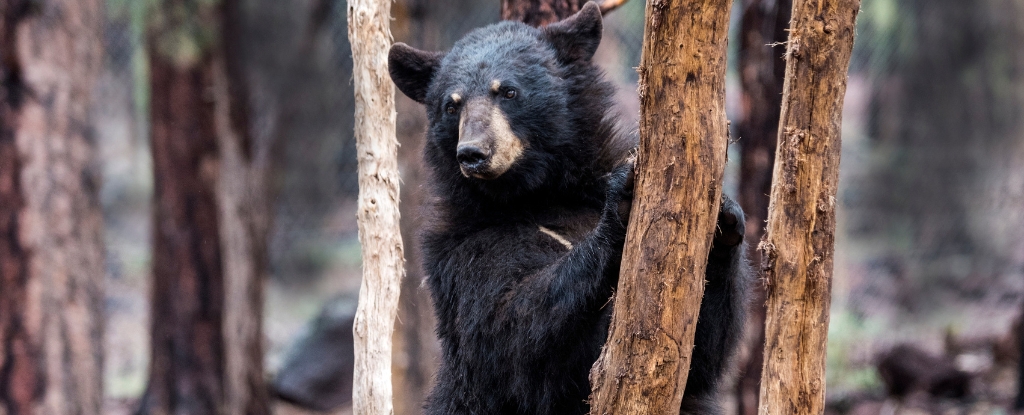According to a new study, sightings of the huge, hairy, ape-like creature Bigfoot may actually be glimpses of a considerably less mystifying animal.
Many reports of the legendary bipedal figure – also commonly known as Sasquatch – might simply be mistaken sightings of American black bears (Ursus americanus) standing on their rear legs, data scientist Floe Foxon explains in his published paper.
Bigfoot’s height appears to usually range from 1.8 to 2.7 meters (6 to 9 feet), similar to adult black bears when standing on their hind legs which range in height from around 1.2 to 2 meters.
Foxon says his study doesn’t prove Bigfoot doesn’t exist, but it does give support to the idea that a significant number of sightings might actually be something more mundane.
Using a model that accounts for locations of human population and forest area, Foxon’s analysis extends to the entire US and Canada, building upon previous research in the Pacific Northwest that discovered a correlation between Bigfoot sightings and black bear populations.
The two are significantly linked across states and provinces, with the results showing Bigfoot sightings increase 4 percent for every 1,000 black bears in a given area. The model estimates that in 2006, on average, there’s one Bigfoot sighting for every 5,000 black bears, for example.
My modelling study on black bear populations and Bigfoot sightings is now peer-reviewed and published with @OfficialZSL‘s @JZoology. Read at: https://t.co/UxCfPLJR9u#zoology #bears #citizenscience #folklore #cryptozoology #bigfoot #sasquatch pic.twitter.com/yLviEixZUk
— Floe Foxon (@FloeFoxon) January 13, 2024
To analyze Bigfoot sightings, Foxon used data from the Bigfoot Field Researchers Organization, which has mapped Bigfoot reports since the twentieth century. He used national census data to determine human population sizes and estimates regarding the area covered by forests from the US and Canadian governments.
Some places may feature plenty of Bigfoot sightings but fewer bears compared to other places, which might seem to contradict what the modeling shows.
“However, this simple comparison of bears to Bigfoot is confounded by the human population and forest area in each state/province,” writes Foxon, a specialist in data management and analysis from the Folk Zoology Society in Pittsburgh.
“When considering the three maps of bears, people and forest areas simultaneously, the possible associations become more apparent.”
There aren’t many bears or forests in Florida for example, but there are plenty of people who could mistake one for something a little more exciting. More people, despite fewer bears and less forest, could explain the higher number of Bigfoot sightings.
Similar to other ‘cryptids’ such as the Loch Ness monster, Bigfoot enthusiasts rely heavily on anecdotal accounts, grainy footage, and casts of footprints to argue the existence of a yet-to-be classified animal. The absence of bones, teeth, or any physical remains though, rather lessens the credibility of the reports.
Given the absence of hard evidence, the scientific community doesn’t attribute Bigfoot sightings to the activity of an unknown creature. While bears might not explain all accounts, correlations like this help build a case that many, if not all, sightings are the result of phenomena well known to science.
Aside from attempting to understand what people believe to be an encounter with mysterious fauna, the study has other benefits. Bigfoot sightings may indirectly estimate black bear populations, helping scientists track them.
“Although preliminary, these findings may suggest that sasquatch sightings have possible utility in bear conservation efforts as a form of citizen science,” writes Foxon.
The research has been published in the Journal of Zoology.





